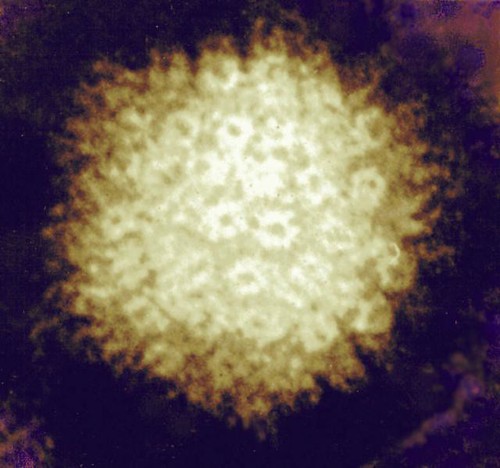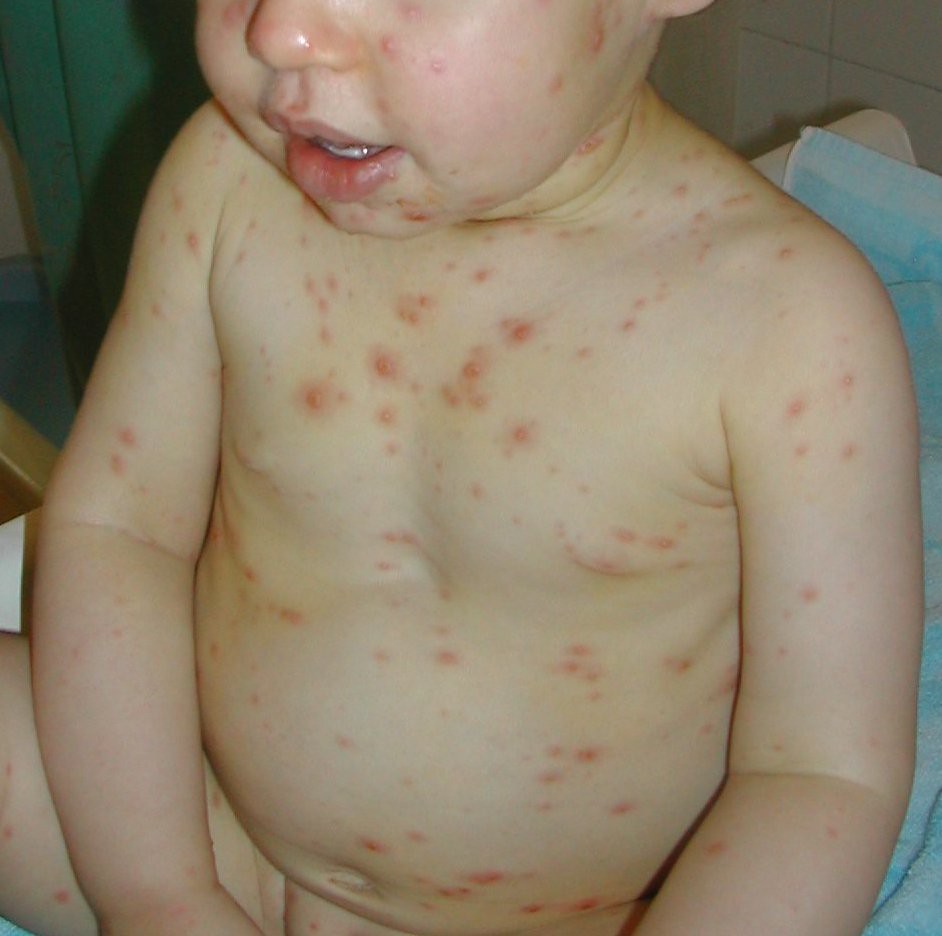15.3.1.1.1.2: Varicella Zoster Virus (HHV3)
- Page ID
- 46695
\( \newcommand{\vecs}[1]{\overset { \scriptstyle \rightharpoonup} {\mathbf{#1}} } \)
\( \newcommand{\vecd}[1]{\overset{-\!-\!\rightharpoonup}{\vphantom{a}\smash {#1}}} \)
\( \newcommand{\id}{\mathrm{id}}\) \( \newcommand{\Span}{\mathrm{span}}\)
( \newcommand{\kernel}{\mathrm{null}\,}\) \( \newcommand{\range}{\mathrm{range}\,}\)
\( \newcommand{\RealPart}{\mathrm{Re}}\) \( \newcommand{\ImaginaryPart}{\mathrm{Im}}\)
\( \newcommand{\Argument}{\mathrm{Arg}}\) \( \newcommand{\norm}[1]{\| #1 \|}\)
\( \newcommand{\inner}[2]{\langle #1, #2 \rangle}\)
\( \newcommand{\Span}{\mathrm{span}}\)
\( \newcommand{\id}{\mathrm{id}}\)
\( \newcommand{\Span}{\mathrm{span}}\)
\( \newcommand{\kernel}{\mathrm{null}\,}\)
\( \newcommand{\range}{\mathrm{range}\,}\)
\( \newcommand{\RealPart}{\mathrm{Re}}\)
\( \newcommand{\ImaginaryPart}{\mathrm{Im}}\)
\( \newcommand{\Argument}{\mathrm{Arg}}\)
\( \newcommand{\norm}[1]{\| #1 \|}\)
\( \newcommand{\inner}[2]{\langle #1, #2 \rangle}\)
\( \newcommand{\Span}{\mathrm{span}}\) \( \newcommand{\AA}{\unicode[.8,0]{x212B}}\)
\( \newcommand{\vectorA}[1]{\vec{#1}} % arrow\)
\( \newcommand{\vectorAt}[1]{\vec{\text{#1}}} % arrow\)
\( \newcommand{\vectorB}[1]{\overset { \scriptstyle \rightharpoonup} {\mathbf{#1}} } \)
\( \newcommand{\vectorC}[1]{\textbf{#1}} \)
\( \newcommand{\vectorD}[1]{\overrightarrow{#1}} \)
\( \newcommand{\vectorDt}[1]{\overrightarrow{\text{#1}}} \)
\( \newcommand{\vectE}[1]{\overset{-\!-\!\rightharpoonup}{\vphantom{a}\smash{\mathbf {#1}}}} \)
\( \newcommand{\vecs}[1]{\overset { \scriptstyle \rightharpoonup} {\mathbf{#1}} } \)
\( \newcommand{\vecd}[1]{\overset{-\!-\!\rightharpoonup}{\vphantom{a}\smash {#1}}} \)

Virus
- Genetic material: double-stranded linear DNA
- Virion structure: enveloped, icosahedral capsid
Replication
- DNA enters host nucleus and circularizes
- Remains separate from host genome as episome
- After initial infection, viral DNA remains in spinal root ganglia
- Replication of virus (and therefore disease) can recur, usually due to stress, immune suppression, other disease, or exposure to factors which can cause DNA damage, such as sunlight (UV)
Transmission
- Virus enters through inhalation of respiratory droplets from an infected individual or touching eyes with virus-contaminated hands
- Infected individuals are contagious before symptoms appear
- Respiratory droplets and fluid from lesions are infective
Epidemiology
- Usually in children, but more dangerous in adults
Clinical Disease
- Chicken Pox (varicella):
- rash appears 2 - 3 week after infection, starting on trunk and back and spreading over entire body (Figure \(\PageIndex{1}\))
- macules (flat lesions) --> papules (raised lesions)--> fluid-filled vesicles on red base ("dew drops on rose petals")
- other symptoms: fever, tiredness, loss of appetite, headache
- rash appears 2 - 3 week after infection, starting on trunk and back and spreading over entire body (Figure \(\PageIndex{1}\))

- Shingles (zoster):
- occurs in about 15% of people who have had chicken pox
- latent virus reactivated by stress, illness, chemotherapy, age, etc.
- can be very painful
- pain from inflamed nerves (from viral activity) can remain for months or years
- rash only occurs in one band, usually on one side of torso or occasionally scalp
- virus shed from shingles lesions can cause chicken pox in previously uninfected individuals

Treatement/Prevention
- No treatment other than symptom relief (aspirin should not be given to children or adolescents)
- Acyclovir can diminish symptoms in shingles, but does not cure it
- Effective vaccine is available
- children are routinely vaccinated against chicken pox
- older adults can be vaccinated to prevent emergence of shingles (vaccine contains much higher dosage of same antigens as chicken pox vaccine)

